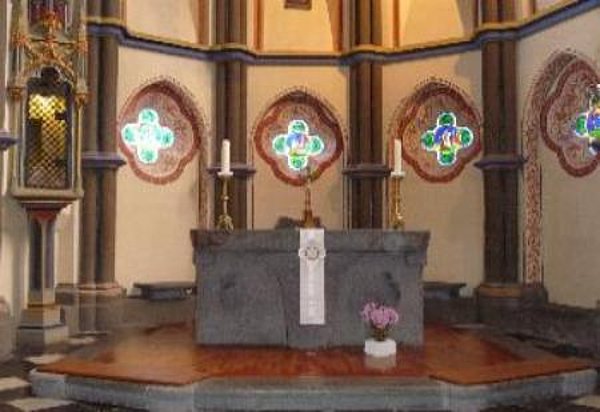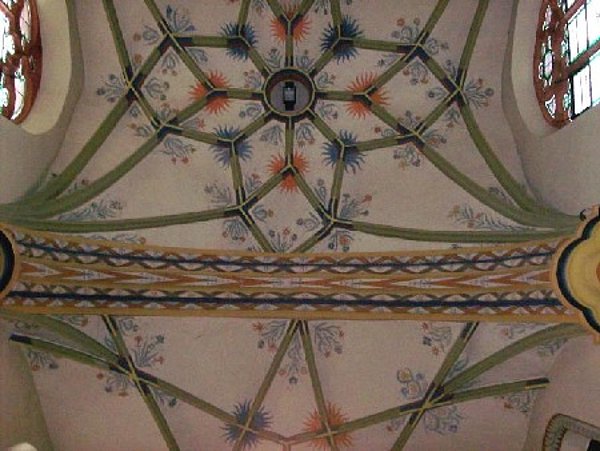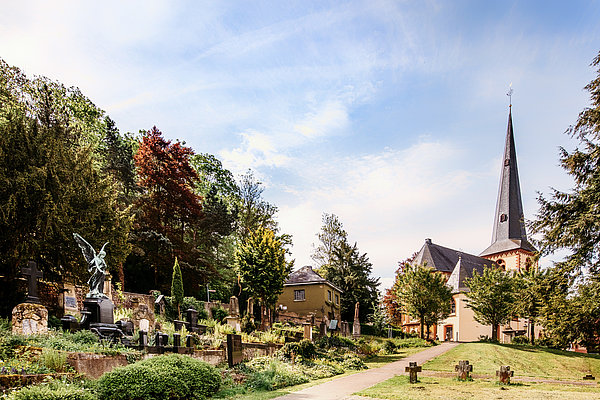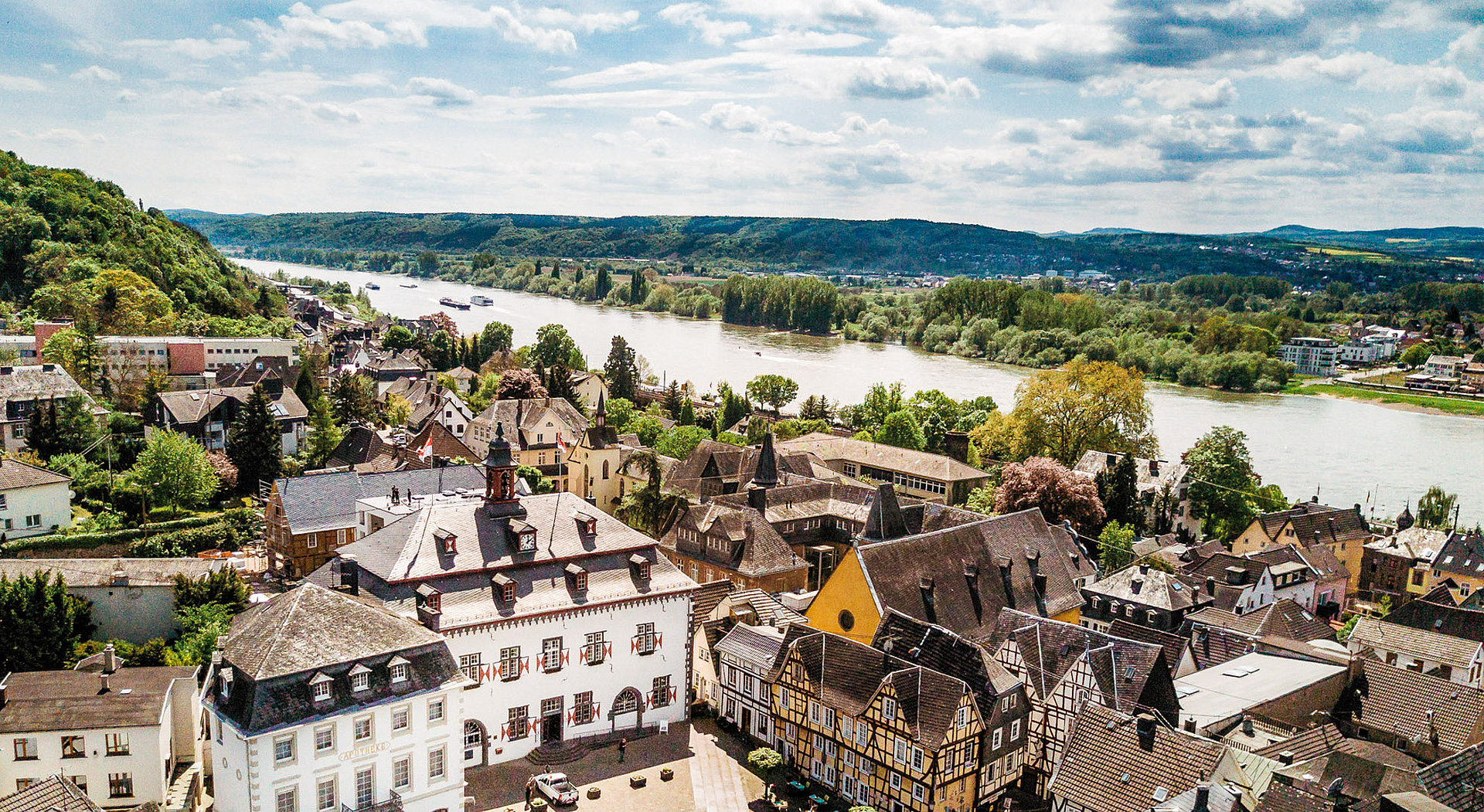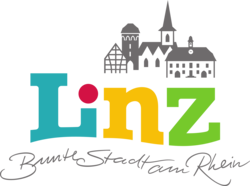Church of St. Martin
Art, architecture and religion in Linz's oldest building
The beauty of St. Martin's Church lies in the particularly outstanding architecture of its east choir and the monumental paintings from 1240/1250 on the walls of the nave.
Since the year 1206 the old parish church stands at the (at that time) highest point of the city of Linz and was consecrated in the year 1214.
In addition to special church services, weddings and baptisms, St. Martin's also provides an impressive space for exhibitions of historical and contemporary art and concert events.
The information about the events and through the whole history of St. Martin you can find on our homepage www.linz-kirche-sanktmartin.de.
Saint Martin - not "only" a cultural jewel, but especially a place of silence and prayer.
You can perhaps combine your visit to the "colourful city at the Rhine" with a moment of silence in the beautiful old church of St. Martin.
Classic Linz city tour, incl. church tour
But it is not only the "experts" who find their way up the steep path to the old parish church. More and more visitors to the city of Linz are including the exposed place of worship in their tour and want to be informed in more detail about its complex history, e.g. on the extended guided tour of the city of Linz, including the church tour. The classic city tour is followed by a visit to St. Martin's Church. The historical inventory worth seeing as well as the elaborate wall paintings from the 13th century are an absolute highlight. Duration 90 minutes.
Are you interested? Then send us a non-binding request via the following link.
The history of St Martin's Church
The old parish church of St. Martin was built from 1206 onwards in several construction phases in place of a Franconian predecessor building.
The three-nave pier-emporal basilica accordingly displays late Romanesque as well as early and late Gothic architectural styles. The oldest components are the tower and the nave, although the steep spire was probably only added at the beginning of the 16th century. The most conspicuous building measure of the late Gothic period is the design of the roofs above the galleries as gables at right angles to the nave.
In the interior of the church, there are wall paintings from the 13th century which, in addition to various figures of saints, also show depictions of pilgrims heading towards St. Jacob. This suggests that pilgrims from the Westerwald stopped off in the Linz parish church on their pilgrimage to Santiago de Compostela. Alongside St. Martin's Church, Tilman Joel Park commemorates the Linz-born electoral chancellor and councillor. The park is integrated into the old cemetery, where grave figures and gravestones from five centuries can be seen.
The altar of Mary
The Altar of Mary from 1463, like the Chair of Grace from 1461, is a Cologne panel painting by the painter of the Lyversberg Passion, donated by Tilmann Joel for the Ratskapelle (Council Chapel) on the market square in Linz, consecrated on 10 October 1461 (demolished in 1817).
The unusual pictorial programme from the Annunciation to the the birth and resurrection of Jesus to Pentecost and the coronation of the Virgin Mary could have come from a devotional book by the founder Tilmann Joel. All the pictures on the inside are marked by the gold background the gold background, while the two wings on the outer side on the outside show landscapes as backgrounds. In the crucifixion scene on the outer wing, a donor kneels, Johannes Ruysch, the nephew of Tilmann Joel.
nephew of Tilmann Joel. Since Tilmann Joel died in 1462, 1 year before the completion of the Marian Altar Johannes Ruysch probably took over the completion of the Marian altar and was depicted on it as the donor. The donor image of his uncle Tilmann Joel is therefore found on the mercy seat.
You will find all the information in the following flyer:
The mercy seat
In the northern aisle of the church of St. Martin is the so-called Gnadenstuhl, a large painted wooden panel donated by Tilman Joel for the Ratskapelle on the market square, which was consecrated in 1462 and demolished in 1818. The painting from the middle of the 15th century comes from the famous Cologne school of painting and shows God the Father holding the dead Christ in his arms on a gold background. To the left of it is first the Apostle Andrew and next to him John the Baptist. To the right, the martyr Pope Clement I is depicted first and next to him St Florinus, who is pouring wine from a jug into a bowl held out to him by a kneeling woman. All persons show their typical attributes such as the St. Andrew's cross or the anchor. In the centre below kneels the praying donor Tilman Joel, who is identified by his coat of arms. As the creator of the work, the Master of the Life of Mary or also the Master of the Lyversberg Passion are obvious. However, it has not yet been possible to assign a clear date to the work and thus to date it more precisely.

